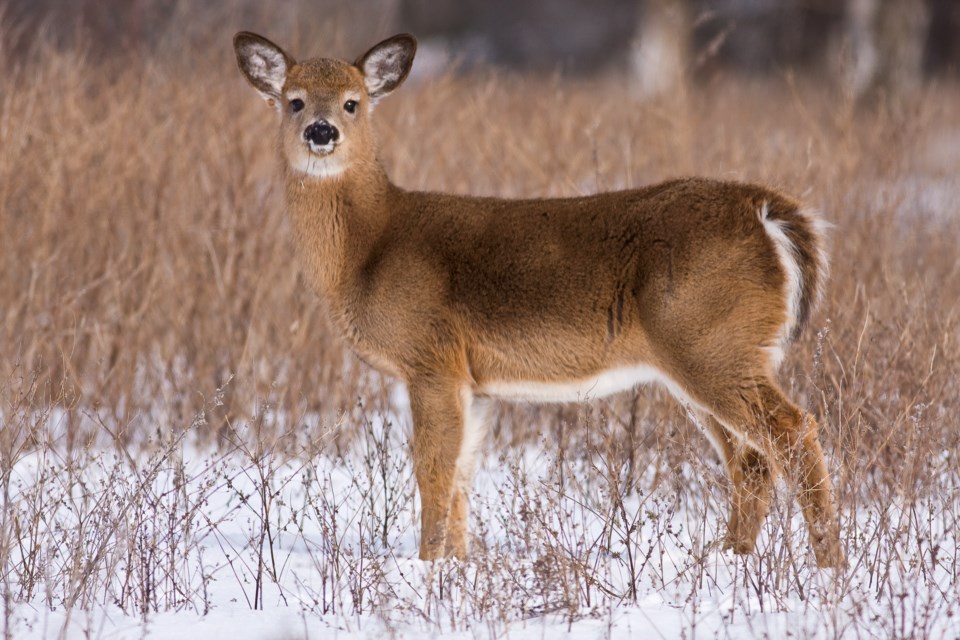Feeding deer corn and carrots through the winter can do them more harm and good, says Bob Bowles, a well-known naturalist and Lakehead University instructor.
Deer are less active in the winter and live in coniferous forests as they are not well adapted to move through deep snow. They survive on browsing tree buds, which are high in fibre and vitamins. Feeding them high carbohydrate food such as corn and carrots disrupts their digestive system and can introduce parasites that can lead to death, said Bowles.
Referring to an OrilliaMatters article published Jan. 18, in which Oro-Medonte resident David Nicholls talked about feeding deer corn, carrots and hay amid a harsh winter, Bowles said while well-intentioned, it's not the best thing to do.
"He's doing the worst thing he could for the deer. The MNR used to feed deer back in the 1970s and research papers showed deer were dying. Their stomachs were full of parasites. They were dying with a full stomach," said Bowles.
Deer have built up a fat reserve that should last them 90 days, said Bowles.
"Just let nature take its course," urged Bowles.
Setting up a feeding area can attract the deer out of their wintering yards, putting them at risk for predators or getting hit by vehicles, warned Bowles. Feeding areas also attract predators such as coyotes, he added.
Nicholls said the issue of feeding deer in winter is a debate that's been going on for 100 years.
"We have created a deer yard which is what they need in these bad winters," said Nicholls, who explained the yard is located close to a tributary of the North River, where deer can get water, thereby reducing the deer's need to travel and helps reduce winter fatalities.
Having the yard in one area means the deer can use packed paths to and from the water source, Nicholls said.
"What happens to the deer if we do absolutely nothing?" he asks.
Ted Duncan, president of the Orillia Fish and Game Conservation Club (OFGCC), said the club does not run a deer feeding yard, but supports people who feed deer in the winter through donations of feed.
"There is a difference of opinion, but we decided to support it and support those who feed deer," he said.
Multiple people in the local region have applied to the OFGCC for donations, including Nicholls, Duncan added.
"It's a positive thing to help people who help deer," said Duncan.
Once people start feeding deer they must continue to do so until the spring as the animals are dependent on it, Duncan added.
The National Deer Association's website says the hardest time for deer to survive is March, particularly if winter continues into the month. Deer are at their weakest point then as they have used up their fat supply, it notes.
Supplemental feeding may then be necessary.
"If you're concerned about deer survival in tough winter conditions, the best thing you can do to help them get through the critical last days of March is to break out the chainsaw and provide more of the food they are adapted to eat in winter: woody browse," reads the article on the website.
Bowles said there are better ways to protect deer than feeding them through the winter.
"If the Orillia Fish and Game Conservation Club really want to conserve habitat for wildlife, they should be buying up swamps and wetlands that deer and moose need for wintering," he said.
Duncan said the non-profit club does not have the funds to purchase property.
